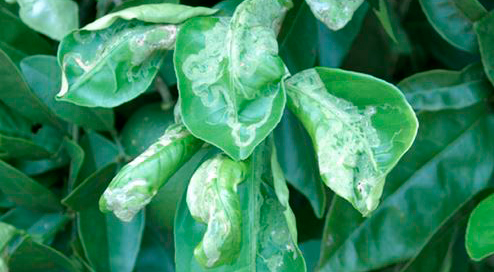- Keep an eye on your citrus for aphids and leaf miner. They breed up quickly in these moist conditions and damage new growth. Treat as required with pyrethrum spray or white oil.

- White cedar caterpillars are on the move. Wrap a hessian bag around the trunk and check underneath for the damaging insects as they’ll congregate there during the day. Squash or spray them with a pyrethrum spray.
- Plan where you’d like to plant your bare rooted roses when they become available in winter. Select the sites and prepare them by digging in manure and mulch. Do the same about a month before planting (more digging in June), and your bare rooted roses will thrive.
- Wait until the rain eases a bit before giving you lawn a fertiliser boost coming into autumn, or else it’ll just wash away and be wasted.
- When the rains do ease, gypsum should also be applied to the lawns and gardens, followed up a couple of weeks later with an application of a soil wetting agent, such as Wettasoil, to make sure that the last summer rains soak in deep and keep the lawn going through winter.
- At the start of the month, put spring flowering bulbs, such as freesia, anemone, ranunculus and daffodil, in the fridge veggie crisper and plant out at the end of the month.
- Prepare the soil for winter veggies (such as broccoli, cabbage and cauliflower) by digging in loads of compost and manure.
- Start planting broccoli, cabbage and cauliflower seedlings from mid-March. Watch out for little green caterpillars, as they can destroy your seedlings overnight.
- Plant strawberry runners towards the end of the month into well-mulched beds with lots of compost and manure.
- Stake dahlias and chrysanthemums if they’re starting to get tall.
- If you’re planting seedlings for a spring display, it is timely to watch out for cut worms. This soil borne pest chews through the seedling stem at ground level. At the first sign, spray with Carbaryl.
- Try not to plan any work in the backyard which needs heavy machinery or vehicles, until the soil dries and firms up. Otherwise you risk compacting the ground and churning up soggy soil – not a good practice.
- If you haven’t done so yet, fertilise bananas, citrus, macadamia, mango, avocado, custard apple, carambola and pawpaw with a quality fruit tree fertiliser
- At the start of the month dig some lime through the soil where you want to plant bush or climbing peas, sweet peas or snow peas. Plant at the end of the month.
- Potatoes can be planted into well-mulched beds at the end of the month, only use certified seed potatoes to avoid introducing damaging virus diseases to your garden.

Vegetables
Plant carrot, leeks, beans, cauliflower, lettuce, silver beet, spring onion, radish, capsicum, cucumber, eggplant, sweet potato, tomato, melons, pumpkin, okra, zucchini, broccoli, kale, cabbage, rocket, beetroot, garlic, celery, coriander, rosemary, fennel, shallots, potatoes and parsnips.
Flowers
Plant alyssum, petunia, marigolds, sweet pea, ageratum, columbine, aurora daisy, nigella, calendula, cyclamen, delphinium, impatiens, dianthus, salvia, everlasting daisy, forget-me-not, gaillardia, foxglove, hollyhock, moluccella, linaria, Livingstone daisy, lobelia, lupin, nasturtium, polyanthus, schizanthus, Iceland poppy, primula, scabiosa, snapgragon, cleome, strawflower, sunflower, torenia, verbena, wallflower, candytuft, cineraria, phlox, cornflower, nemesia, pansy, statice, stock and viola.

Main image: Forget-me-not